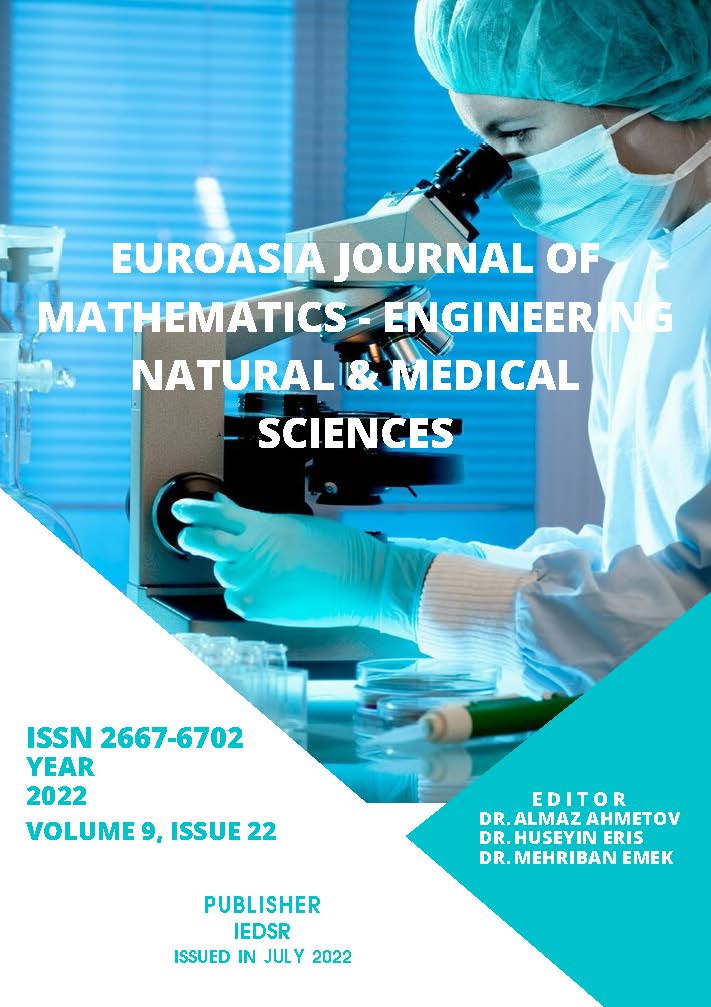Kedilerde Dermatofitoz ve Sağaltım Seçenekleri
DOI:
https://doi.org/10.5281/zenodo.6946398Anahtar Kelimeler:
Kedi, deri mantar enfeksiyonu, sağaltımÖzet
Dermatofitozis dünyada yaygın şekilde görülür ve kedilerin en önemli mantar enfeksiyonudur. Diğer hayvan türlerine ve insanlara bulaştırılabilir. Öncelikli bulaşma yolu doğrudan temas ya da travmatik hasar yerlerindendir. Kedilerin primer patojen etkeni Microsporium (M.) canis’tir, ancak dışarıya çıkan kedilere Trichophyton (T.) spp. enfeksiyonları bulaşabilir. Dermatofitler deri, kıl, kabuk ve tırnakları enfekte eden aerobik mantarlardır. Kedilerde sıklıkla belirlenen dermatofitoz etkenleri M. canis, M. gypseum, M. persicolor ve T. mentagrophytes, T. quinckeanum ve T. verrucosum’dur. M. gypseum haricinde bu etkenler keratinli epidermal dokuda (çoğunlukla stratum corneum, kıllar, bazen tırnaklar) çoğalırlar ve beslenme kaynağı olarak keratini kullanabilmek için proteolitik ve keratolitik enzimler üretirler. Ev kedilerinin normal mantar florası farklıdır. En sık izole edilen saprofitler Aspergillus, Alternaria, Penicillium ve Cladosporium spp.’dir. Belirtilen nedenlerle kedilerde dermatofit etkenlerine bağlı mantar hastalıkları oldukça önemlidir. Bu makale kapsamında kedilerde mantar enfeksiyonlarına neden olan başlıca dermatofit etkenleri sıralandı. Son yıllara ait bilimsel kaynaklar geniş şekilde taranıp, değerlendirilerek hangi dermatofit enfeksiyonuna hangi ilaçların etkili olduğuna yönelik bilgiler verildi. Dermatofit etkenli mantar hastalığı olan kedilerde öne çıkan klinik belirtilerin çeşidi ve şiddetine bağlı olarak yapılması gereken klinik uygulamalar ile kullanılacak farklı ilaç ya da ilaç kombinasyonlarına yönelik geniş bilgiler verildi. Ayrıca klinisyen veteriner hekimlere pratik yönden kolaylık sağlaması bakımından, kedilerde mantar hastalıklarında sağaltım seçeneğini oluşturan öncelikli uygulama için seçilen sistemik antifungal ilaçların genel dozları ve sıklıkları ile dermatofitozisin sağaltımında tercih edilecek sistemik antifungal ilaçların kullanım yolları ve dozlarını içeren önemli bilgiler ayrı ayrı tablolar halinde sunuldu.
Referanslar
Colombo, S., Cornegliani, L., & Vercelli, A. (2001). Efficacy of itraconazole as combined continuous/pulse therapy in feline dermatohytosis: preliminary results in nine cases. Veterinary Dermatology, 12, 347-350.
Colombo, S., Scarampella, F., Ordeix, L., & Roccabianca, P. (2012). Dermatophytosis and papular eosinophilic/mastocytic dermatitis (urticaria pigmentaso-like dermatitis) in three Devon Rex cats. Journal of Feline Medicine and Surgery, 14, 498-502.
Dahl, M. V. (1993). Suppression of immunity and inflammation by products produced by dermatophytes. Journal of the American Academy of Dermatology, 28, S19-S23.
DeBoer, D. J., & Moriello, K. A. (1993). Humoral and cellular immune response to Microsporium canis in naturally occurring feline dermatophytosis. Journal of Medical and Veterinary Mycology, 31, 121-132.
DeTar, L. G., Dubrovsky, V., & Scarlett, J. M. (2019). Descriptive epidemiology and test characteristics of cats diagnosed with Microsporium canis dermatophytosis in a Northwestern US animal shelter. Journal of Feline Medicine and Surgery, 21(12), 1198-1205.
Evason, M., & Loeffler, A. (2020). Dermatophytosis (Ringworm). In: Infectious Diseases of the Dog and Cat, Weese JS, Evason M (Eds), CRC Press, Taylor and Francis Group.
Frymus, T., Gruffydd-Jones, T., Pennisi, M. G., Addie, D., Belak, S., Boucraut-Baralon, C., Egberink, H., ….. Horzinek, M. C. (2013). Dermatophytosis in cats. ABCD guidelines on prevention and management. Journal of Feline Medicine and Surgery, 15, 598-604.
Giguere, S. (2013). Antifungal chemotherapy. In: Antimicrobial Therapy in Veterinary Medicine, Giguere S, Prescott JF, Dowling PM, Fifth Edition, Wiley Blackwell.
Grando, S., Herron, M., Dahl, M. V., & Nelson, R. D. (1992). Binding and uptake of Trichophyton rubrum mannan by human epidermal keratinocytes: a time-course study. Acta Dermato-Venereologica, 72, 273-276.
Gordon, E., Idle, A., & DeTar, L. (2020). Descriptive epidemiology of companion animal dermatophytosis in a Canadian Pacific Northwest animal shelter system. Canadian Veterinary Journal, 61, 763-770.
Hnilica, K. A., & Medleau, L. (2002). Evaluation of topically applied enilconazole for the treatment of dermatophytosis in a Persian cattery. Veterinary Dermatology, 13, 23-28.
Hsiao, Y. H., Chen, C., Han, H. S., & Kano, R. (2018). The first report of terbinafine resistance Microsporum canis from a cat. Journal of Veterinary Medical Science, 17-0680.
Ilhan, Z., Karaca, M., Ekin, I. H., Solmaz, H., Akkan, H. A., & Tutuncu, M. (2016). Detection of seasonal asymptomatic dermatophytes in Van cats. Brasilian Journal of Microbiology, 47, 225-250.
Ivaskiene, M., Matusevicius, A. P., Grigonis, A., Zamokas, G., & Babickaite, L. (2016). Efficacy of topical therapy with newly developed terbinafine and econazole formulations in the treatment of dermatophytosis in cats. Polish Journal of Veterinary Sciences, 19(3), 535-543.
Moriello, K. A., & DeBoer, D. J. (2012). Dermatophytosis. In: Greene CE (ed). Infectious diseases of the dog and cat. 4th ed. St Louis: Elsevier, 588-602.
Moriello, K. (2014). Feline Dermatophytosis. Aspects pertinent to disease management in single and multiple cat situations. Journal of Feline Medicine and Surgery, 16, 419-431.
Moriello, K. A., Coyner, K., Paterson, S., & Mignon, B. (2017). Diagnosis and treatment of dermatophytosis in dogs and cats: Clinical Consensus Guidelines of the World Association for Veterinary Dermatology. Veterinary Dermatology, 28, 266-e68.
Moriello, K. A. (2020). Dermatophytosis. In: Feline Dermatology, Noli C, Colombo S. (Eds), Springer Nature Switzerland AG.
Načeradská, M., Fridrichová, M., Kolářová, M. F., & Krejčová, T. (2021). Novel approach of dermatophytosis eradication in shelters: effect of Pythium oligandrum on Microsporum canis in FIV or FeLV positive cats. BMC veterinary research, 17(1), 1-10.
Nardoni, S., Mugnaini, L., Papini, R., Fiaschi, M., & Mancianti, F. (2013). Canine and feline dermatophytosis due to Microsporum gypseum: a retrospective study of clinical data and therapy outcome with griseofulvin. Journal de Mycologie Medicale, 23(3), 164-167.
Sierra, P., Guillot, J., Jacob, H., Bussieras, S., & Chermette, R. (2000). Fungal flora on cutaneous and mucosal surfaces of cats infected with feline immunodeficiency virus and feline leukemia virus. American Journal of Veterinary Research, 61(2), 158-161.
Sparkes, A. H., Stokes, C. R., & Gruffydd-Jones, T. J. (1995). Experimental Microsporium canis infection in cats: Correlation between immunological and clinical observations. Journal of Medical and Veterinary Mycology, 33, 177-184.
Ziglioli, V., Panciera, D. L., LeRoith, T., Wiederhold, N., & Sutton, D. (2016). Invasive Microsporium canis causing rhinitis and stomatitis in a cat. Journal of Small Animal Practice, 57, 327-331.
İndir
Yayınlanmış
Nasıl Atıf Yapılır
Sayı
Bölüm
Lisans
Telif Hakkı (c) 2022 Euroasia Journal of Mathematics, Engineering, Natural & Medical Sciences

Bu çalışma Creative Commons Attribution-NonCommercial 4.0 International License ile lisanslanmıştır.


